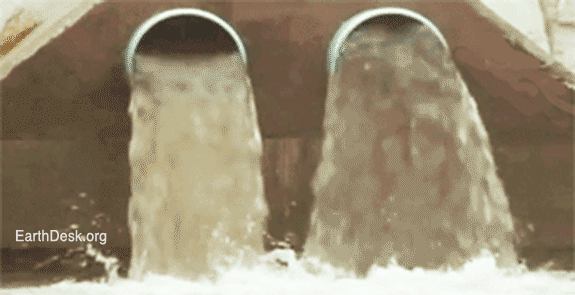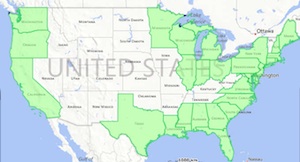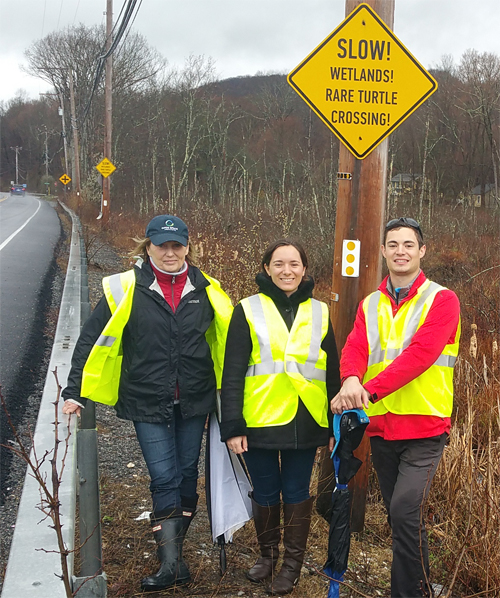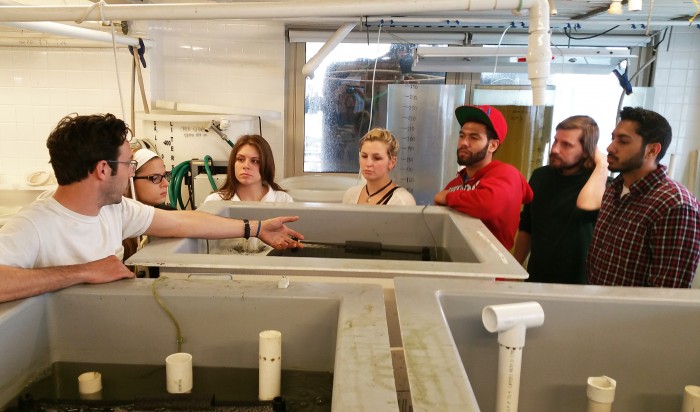
The quality of American waterways continues to worsen. According to the most recent data released by the U.S. Environmental Protection Agency:
- States have issued 223 new fish advisories, bringing the total advisories recognized by EPA to 4,821.
- Approximately 17.7 million lake acres and 1.36 million river miles were under advisory in 2011, representing 42.3 percent of the nation’s total lake acreage and 36 percent of the nation’s total river miles.
- Of the nation’s 3,650 beaches monitored in 2011, health notifications and closures affected 33,127 beach-days.
The 1972 Clean Water Act aimed to retire these problems 31 years ago:
It is the national goal that wherever attainable, an interim goal of water quality which provides for the protection and propagation of fish, shellfish, and wildlife and provides for recreation in and on the water be achieved by July 1, 1983.
And yet, as terrible as EPA’s news about fish and beaches sounds, it is misleadingly hopeful.

EPA’s beach database is generally limited to coastal and Great Lakes beaches within the highlighted states. Hawaii, Alaska and US territories are included as well. Map via EPA
EPA says only 5% of beach-days were affected by contamination events. But generally the “beaches” in the EPA database are federally recognized coastal beaches, that is, ocean and Great Lakes waters. The status of hundreds of inland urban, suburban and rural swimming areas are not reported on the EPA site. And antiquated analytical methods typically do not return results on the condition of swimming waters until two days after a sample was collected — in other words, two days after you have already been swimming.
All the states and U.S. territories have fish advisories but EPA’s database does not include all the advisories created by states themselves. For example, in Minnesota alone more than 1,000 water bodies are subject to state advisories.
 EarthDesk reported last year at this time:
EarthDesk reported last year at this time:
The bad news about fish has been building for decades. And when fish are poisoned, so too are the wildlife that feed on them, as the mounting problem of mercury contamination demonstrates. Nationwide, public awareness programs about the dangers of contaminated species, such as the “Fish Smart” campaign on San Francisco Bay, have become commonplace. A sure sign that society has begun to institutionalize this horrifying reality is the now soldout Dr. Seuss collectible poster created by EPA to delight women of child-bearing age and young children with the bad news about “One fish, Two fish, Don’t fish, Do fish.”
Rather than soothe us with fanciful children’s art, EPA is better advised to employ a skull and crossbones.
The Clean Water Act’s spectacular failure to meet its goals has been understood for decades, but no decisive action has been taken. Former EPA Administrator Carol Browner sounded the alarm on April 20, 1984, only 10 1/2 months after the failure of the 1983 goal:
Today EPA is releasing a report that shows that 40 percent of our nation’s rivers, lakes, and streams are polluted. Many more are threatened with pollution. This poses a threat to all Americans, all people, all of life itself . . . We need to change our laws to gain greater protection of the water we drink and the water we use for recreation, business, and sustaining our natural world.
According to EPA, 40% of rivers, lakes, and estuaries are still not clean enough to meet basic uses such as fishing or swimming.
Browner had it right in 1984 when she called for a change in the Clean Water Act just 12 years after its passage. She was the last EPA administrator courageous enough to do so. In 2014, the law is damaged and outmoded. The 1983 target was only step one in a long list of policy goals that follow in the Clean Water Act. Its failure to be met, or revised, has had a cascading effect.
Again from EarthDesk of one year ago:
The July 1, 1983 fishable-swimmable goal of the Clean Water Act was about more than the protection of recreation, and fish and wildlife propagation. It was an “interim goal of water quality” that was intended to lead to “the national goal that the discharge of pollutants into the navigable waters be eliminated by 1985.”
Yet, remarkably, in the three decades since the top two goals of the Clean Water Act failed, neither has been reconsidered or revised, which only Congress has the authority to do. Because the goals are non-binding, it is now popular to characterize them as merely aspirational. But what direction does the Clean Water Act take now that it is empty of aspirations?
EarthDesk, October 23, 2013 addressed the water policies of current EPA Administrator Gina McCarthy. It bears repeating:
Here is Administrator McCarthy’s strategy for fixing this unrelenting public and environmental health crisis:
- Reduce uncertainties about the scope of the Clean Water Act;
- Employ green infrastructure and other locally driven solutions that restore degraded waterways and revitalize communities;
- Focus resources to decrease pollution to our waters and protect high quality waters.
- Create new paradigms including state, tribal, city roles and incentives for local action;
- Coordinate closely with local, state, and regional stakeholders, including elected officials, industry, non-governmental organizations, and environmental entities;
With these accomplished, she states:
We can achieve real, cost-effective solutions to our nation’s water quality challenges. . . Simultaneously, our efforts will protect drinking water from known and emerging contaminants that endanger public health.
But Administrator McCarthy’s plan is timid, its voice feeble, its goal to protect drinking water unattainable. Soft vocabulary such as, “focus,” “paradigm,” “coordinate,” “reduce uncertainty” and “locally driven” are red flags that a meaningful national plan for clean water is not likely during the remaining years of Barack Obama’s presidency.
- A major research and development program to innovate treatment and monitoring technologies and management practices.
- Economic incentives to induce polluters to perform beyond the minimum requirements of the law.
- The addition of public health objectives to the Clean Water Act.
- Priority emphasis on polluted waterways in economically disadvantaged communities.
- New target dates for achieving fishable, swimmable waters, and eliminating the discharge of pollutants.
- Massive public funding for upgrading, not just repairing, the nation’s water and wastewater treatment and delivery infrastructure.
- Development of real-time monitoring technologies that protect water consumers and recreational users in real-time.
- Increased enforcement
- Aggressive oversight of states where discharge permit standards are no longer being improved.
- Mandatory monitoring for emerging pollutants, such as pharmaceuticals, hormones and synthetic musks.
- A national crackdown on “outlier” polluters such as CAFOs, fish-killing power plants, and industries that discharge toxins through public wastewater treatment facilities.
- A National Clean Water Commission of blue-ribbon experts in law, engineering, sciences, health, technology, finance and economics to recommend new national goals to replace the tired and expired goals of current federal water laws, and a policy and business plan to implement them.
Administrator McCarthy, it is not too late for you to lead the conversation. The nation’s water laws are badly in need of overhaul. Say so. Congress must wake up to the health crisis that affects every state in the nation. Say so. Fresh-thinking environmentalists, industrialists and technical and policy experts must align to bring you ideas and innovations. Say so.
Acknowledge that progress toward clean and safe water will not happen during your term, or the term of any EPA administrator, without new policies that mobilize technology, management, practices, financing, incentives, public funding and more.
Admit that elimination of pollution promised by the Clean Water Act, and protection from adverse health effects promised by the Safe Drinking Water Act will continue to languish as distant, illusive goals until the slow-motion failure of executive policy and the serial neglect of successive Congresses are halted.









